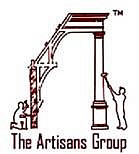1. INTRODUCTION
The design phases of chemical processing plant and other industrial projects contain many potential risks. This is especially true when the project is for the first-of-a-kind deployment of new technology or when the performing organization has not previously successfully completed a similar project. These potential risks encompass several aspects of the project and final system, including: design phase project management issues such as cost overruns and schedule delays; procurement issues; constructability issues; operational and maintenance issues; and performance issues related to product quality, system capacity, and system availability.
This article describes three tools and methods that the author has found useful for identifying and mitigating risks during the
design phases of chemical processing plant projects. Moreover, some of the risk mitigation methods described herein are generic in that they can also be applied to reduce risks associated with broader aspects of engineering and construction projects, such as project management risks and scheduling risks.
Section 2 of this article discusses the use of Failure Mode and Effects Analysis (FMEA) for the identification, prioritization, and mitigation of risks and includes an illustrative example. The use of the Kepner Tregoe (K-T) Analysis method for selecting the optimal solution for a given decision from several alternative solutions is discussed in detail, with an example, in Section 3. Finally, Section 4 discusses the importance of performing an availability analysis during the design phases of industrial processing plant projects. While Monte Carlo simulations are commonly used to identify and quantify cost and schedule risks, Long International discusses the use of Monte Carlo- based tools elsewhere1 and further discussion is beyond the scope of this article.
2. FAILURE MODE AND EFFECTS ANALYSIS
Failure Mode and Effects Analysis (FMEA) is a useful analysis tool for identifying, prioritizing, and mitigating risks. FMEA was developed by the U.S. military and is heavily used in the semiconductor industry.2 This author has found FMEA to be a valuable tool for risk mitigation during the process design and development phases of chemical processing plant projects. FMEA can be especially useful for the first-of-a-kind deployment of new technologies or when the performing organization has not previously completed a similar project.
Performance of an FMEA is a team effort. Ideally, the FMEA team members should be of varied backgrounds and project roles to ensure the identification of risks from multiple points of view. FMEA participants can include contractor staff, such as project managers and key design engineers from various disciplines, as well as project owner staff, such as key maintenance and operations personnel. To facilitate the FMEA process, team members should be selected to fill the roles of FMEA leader (typically a senior engineer or project manager) and scribe (requires good spreadsheet and typing skills).
The FMEA process consists of two main tasks: the identification of risks and the subsequent prioritization and mitigation of risks, as discussed below in Sections 2.1 and 2.2, respectively. While commercial FMEA software is available and may generally improve the facilitation of the FMEA process, it is this author’s experience that a simple spreadsheet is generally sufficient.
The FMEA process is similar to, but different from, typical hazard and operability studies (HAZOPs). The primary difference is that HAZOPs focus on safety hazards, whereas the scope of an FMEA can cover safety as well as performance, quality, and reliability.3 Additionally, FMEA employs a bottom-up approach (as is discussed in Section 2.1 below) to ensure that all possible failure modes are captured, as opposed to the typical top-down approach of a HAZOP.4
2.1 FMEA: RISK IDENTIFICATION
The first step in the FMEA process is risk identification, which is typically accomplished through a team brainstorming exercise to identify all possible modes of failure and their associated effects. To aid in the subsequent prioritization and mitigation of the identified failure modes, it is important that the correct root cause and means of detection (e.g., process control system components) be determined for each of the identified failure modes.
The “what can go wrong” brainstorming exercise should generate an all-inclusive list of potential failure modes and risks. During the design phases of industrial processing plant projects, these risks may include but not be limited to:
- Potential safety issues during construction, operation, and maintenance of the system;
- Potential project management issues such as schedule delays and cost overruns associated with design complexity or the design of a first-of-a-kind system;
- Potential procurement issues such as availability of materials and long lead times, especially for first-of-a-kind systems that may require customized equipment fabrication or other hard-to-procure materials;
- Potential process or mechanical equipment issues that could impact equipment and/or system availability, including the lack of equipment redundancy;
- Potential process or mechanical equipment issues that could impact system capacity;
- Potential process or mechanical equipment issues that could impact product quality;
- Potential operational issues and concerns, including the potential for loss of utilities such as power, water, and compressed air;
- Potential maintenance access issues and concerns with respect to equipment layout, including means for moving equipment such as cranes, hoists, and fork lifts;
- Potential operations personnel access issues and concerns with respect to equipment layout, including sample port accessibility and means for refilling reagent supplies such as hoists and drum dollies;
- Potential for equipment damage during maintenance and/or operation; and
- Potential issues or concerns regarding the constructability of the as-designed system.
To ensure the identification of all possible failure modes, all modes of operation as well as the transitions between the various operating modes should be considered during the brainstorming exercise. It is also important to systematically work through all components and aspects of the system at hand in a logical manner such that no potential risks are overlooked. To achieve this, the FMEA brainstorming exercise should be a bottom-up analysis based either on the work breakdown structure (WBS) for the project or on a systems hierarchy such as that shown below in Figure 2-1, where individual pieces of equipment are identified at the component level and are then integrated together at higher and higher levels of the system hierarchy.5 If the project was specified and/or designed based on systems engineering principles, the system hierarchy may be similar to the WBS for the project.
To facilitate the FMEA process, a template6 such as that shown below in Table 2-1, which includes hypothetical entries for illustration purposes, should be used to capture the relevant information for each potential failure mode. The severity, occurrence, detectability, risk priority number (RPN), and action recommended columns are discussed in detail in Section 2.2 below.
2.2 FMEA: RISK RANKING AND MITIGATION
Once the failure modes and their effects have been identified as described above in Section 2.1, the next step in the FMEA process is to rank the relative risks of each line item so that the failure modes can be prioritized for mitigation in order from greatest to least risk. During this step of the FMEA, each of the identified risk items is scored using the following criteria:
- Severity (S): the severity of the failure mode effect, ranked on a scale of 1 (low risk) to 10 (high risk). Severity rankings of 1 typically indicate no noticeable effect on the process or product while severity rankings of 10 indicate a significant, potentially life threatening, safety issue.
- Occurrence (O): the frequency of occurrence of the failure mode, ranked on a scale of 1 (low risk) to 10 (high risk). Occurrence rankings of 1 indicate that failures are extremely rare while occurrence rankings of 10 indicate that failures are extremely frequent.
- Detection (D): the likelihood that the current process controls will detect the failure mode prior to its occurrence, ranked on a scale of 1 (low risk) to 10 (high risk). Detection rankings of 1 indicate that current controls are almost certain to detect a failure prior to its occurrence while detection rankings of 10 indicate there is currently no detection for the failure mode.
For reference, Table 2-2, Table 2-3,7 and Table 2-4 below, adapted from “FMEA – Lean Manufacturing and Six Sigma Definitions,”8 depict typical example process FMEA ranking descriptions for severity, occurrence, and detection, respectively. It should be noted that the rankings are somewhat subjective, are provided herein as a general guide, and may need to be tailored to the FMEA at hand.9 Rankings should be finalized and agreed upon by members of the FMEA team prior to starting the scoring process.
. . .
Download PDF to continue reading article, footnotes, figures, tables, and references.
Long International provides expert claims analysis, dispute resolution, and project management services to the Process Plant Engineering and Construction industry worldwide. Our primary focus is on petroleum refining, petrochemical, chemical, oil and gas production, mining/mineral processing, power, cogeneration, and other process plant and industrial projects. We also have extensive experience in hospital, commercial and industrial building, pipeline, wastewater, highway and transit, heavy civil, microchip manufacturing, and airport projects.
©Copyright - All Rights Reserved
DO NOT REPRODUCE WITHOUT WRITTEN PERMISSION BY AUTHOR.











